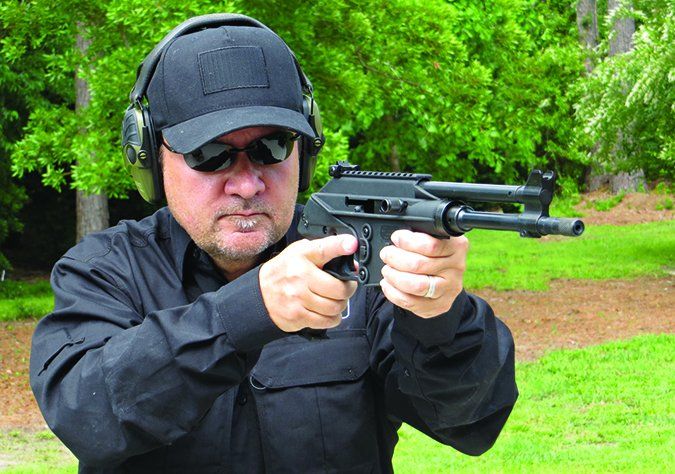
It could be argued that the AR pistol evolved out of a desire and need for shooters to own a legal short-barrel rifle-caliber weapon without having to jump through BATFE hoops or pay for a tax stamp to own an SBR (short-barreled rifle). The difference between an AR rifle and pistol comes down to the pistol not being compatible nor able to attach a stock. We wanted to take a look at these AR pistols for home defense and other uses where a compact firearm makes sense, because they offer a number of benefits over a conventional AR rifle, mainly, being more maneuverable while being chambered in a rifle caliber and being compatible with common AR-15 magazines. We acquired three examples, a Spike’s Tactical The Jack custom build, a CMMG Mk4 K, and a Kel-Tec PLR-16. The Spike’s and CMMG are true AR-15 mechanisms reconfigured to a pistol, while the Kel-Tec uses a different operating mechanism. All three are chambered in 5.56mm NATO/223 Rem. and all are compatible with AR-15 magazines.
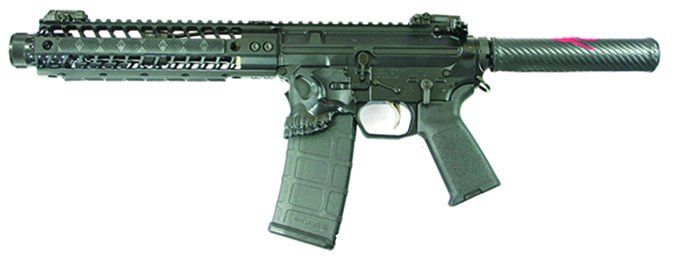
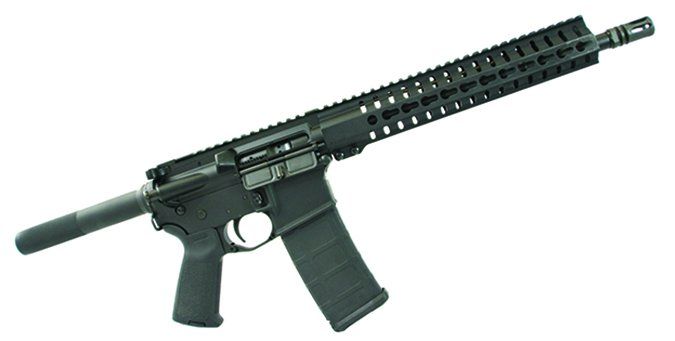
We tested these pistols for accuracy, performance, reliability, compatibility with a range of AR-15 magazines, maintenance, ability to be customized, and cost. We found that the Kel-Tec was inexpensive compared to the CMMG and Spike’s Tactical pistols. The Kel-Tec, however, needed to be operated differently. The CMMG and Spike’s were an easy transition from AR rifle to AR pistol. An AR pistol, as we found out, is nearly as effective as a full-size AR at close to mid range. With the right ammunition, they could be tuned to be a very capable home-defense choice for anyone in the family competent to operate a firearm. Namely, using frangibles to limit overpenetration through walls and doors while still supplying lots of pop.
The AR pistol’s edge is its size, but it is also a disadvantage, as an AR pistol is not as easy to shoot as a rifle or a traditional handgun. They are large and require two hands to effectively deliver accurate shots. You could get off a few shots holding an AR pistol with one hand, but the weight of the pistol causes muscle fatigue. A typical full-size handgun may weigh more than 2 pounds loaded, compared to these AR pistols, which weighed from 3.2 to 6 pounds unloaded. Add a pound or more for a 30-round magazine, and you’ve got a sidearm that would wear out nearly anyone who didn’t transport them with a sling, just as you would with a rifle. We used one of the SIG SBX Pistol Stabilizing Braces ($149; SIGSauer.com) and found we liked to use the brace differently than intended, which we will get into shortly.
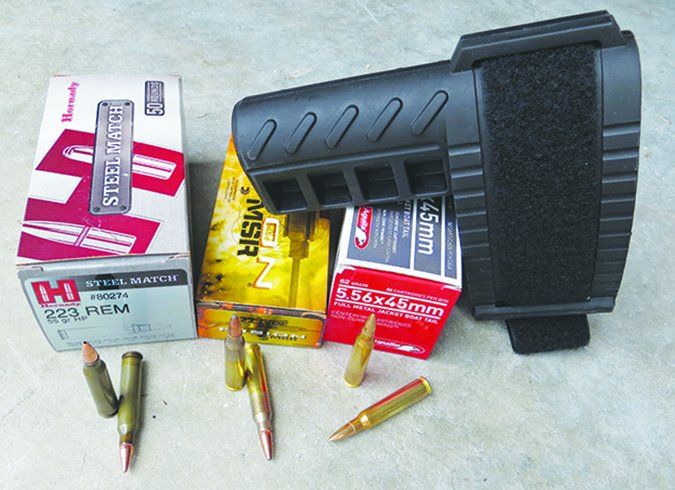
We also fired the pistols using a Blackhawk Storm Sling ($33.95; Blackhawk.com), a single-point sling with a built-in bungee cord, which many team members felt was an excellent way to carry and control the pistol. We tested with three different AR-15 magazines, including a Brownells USGI CS (Brownells.com; $14) constructed of aluminum, and two polymer magazines, the Magpul PMag Gen2 (Brownells.com; $12.30), and the FAB Defense Ultimag (TheMakoGroup.com; $25). For fast reloads, we also used a Kydex AR magazine carrier from IBX Tactical (IBXTactical.com; $35).
Range Data
| Aguila 5.56mm NATO 62-gr. FMJ-BT | CMMG Mk4 K | Spike’s Tactical Custom Build | Kel-Tec PLR-16 |
| Average velocity | 2789 fps | 2339 fps | 2489 fps |
| Muzzle energy | 1071 ft.-lbs. | 753 ft.-lbs. | 853 ft.-lbs. |
| Smallest group | 0.2 in. | 0.5 in. | 0.9 in. |
| Average group | 0.7 in. | 0.9 in. | 1.3 in. |
| Hornady Steel Match 223 Rem. 55-gr. HP | |||
| Average velocity | 2776 fps | 2320 fps | 2501 fps |
| Muzzle energy | 941 ft.-lbs. | 657 ft.-lbs. | 764 ft.-lbs. |
| Smallest group | 0.5 in. | 0.3 in. | 0.4 in. |
| Average group | 0.9 in. | 0.5 in. | 0.7 in. |
| Federal Fusion 223 Rem. 62-gr. Fusion | |||
| Average velocity | 2693 fps | 2353 fps | 2462 fps |
| Muzzle energy | 999 ft.-lbs. | 762 ft.-lbs. | 835 ft.-lbs. |
| Smallest group | 0.7 in. | 0.4 in. | 1.2 in. |
| Average group | 1 in. | 0.6 in. | 1.3 in. |
| To collect accuracy data, we fired five-shot groups from a bench using a rest. Distance: 25 yards with open sights. We recorded velocities using a ProChrono digital chronograph set 15 feet from the muzzle. | |||
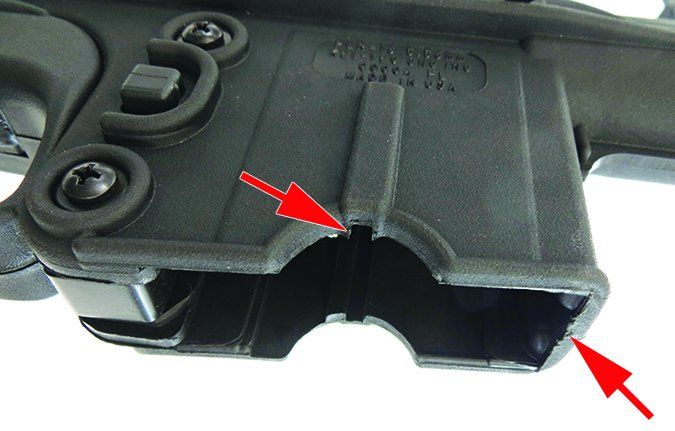
Building an AR pistol is not just a matter of installing a short barrel in a upper receiver and swapping out the receiver extension/buffer tube. Short barrels lose velocity and provide less dwell time for the projectile, so manufacturers need to tune and time the mechanism. A short barrel also needs to work on a range of loads from low- to high-quality ammunition. Reliability can be an issue.
Hands down, the CMMG and Spike’s offered more customization than the Kel-Tec because they are compatible with a range of AR-15 aftermarket products — triggers, rails, pistol grips, BUIS, and more. The Kel-Tec is not as compatible. Also, for those testers already familiar with an AR-15, the CMMG and Spike’s were much easier to maintain. But there’s much more to consider, which we relate below:
Kel-Tec PLR-16 5.56mm NATO, $676
GUN TESTS GRADE: B (Best Buy)
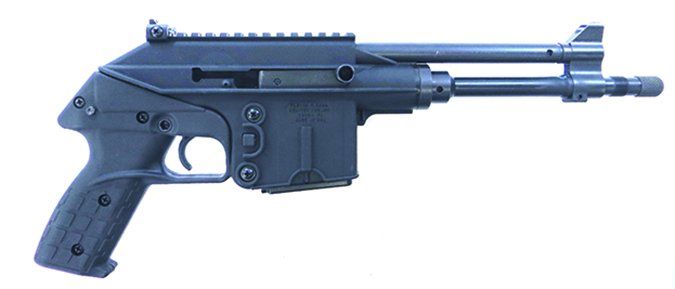
While not as refined as the other pistols, the PLR-16 had good accuracy and eventually performed well. It needs additional accessories to be the most user friendly.
| ACTION TYPE | Semiautomatic long-stroke gas piston |
| OVERALL LENGTH | 18.5 in. |
| OVERALL HEIGHT (w/o mag or sights) | 7.8 in. |
| WEIGHT UNLOADED | 3.2 lbs. |
| UPPER RECEIVER | N/A |
| LOWER RECEIVER | N/A |
| BARREL | 9.5 in. |
| MUZZLE DEVICE | None, 1/2-28 TPI |
| BRACE | N/A |
| PISTOL GRIP | Textured polymer |
| HANDGUARD | None |
| MAGAZINE | (1) 10-rd.; AR-15 compatible |
| REAR SIGHT | Adjustable |
| FRONT SIGHT | Adjustable |
| SIGHT RADIUS | 12.5 in. |
| TRIGGER | 7.5 lbs. |
| SAFETY | Crossbolt |
| CARTRIDGE CASE DEFLECTOR | No |
| DUST COVER | No |
| FORWARD ASSIST | No |
| WARRANTY | Limited lifetime |
| TELEPHONE | (660) 248-2293 |
| WEBSITE | KeltecWeapons.com |
| MADE IN | USA |
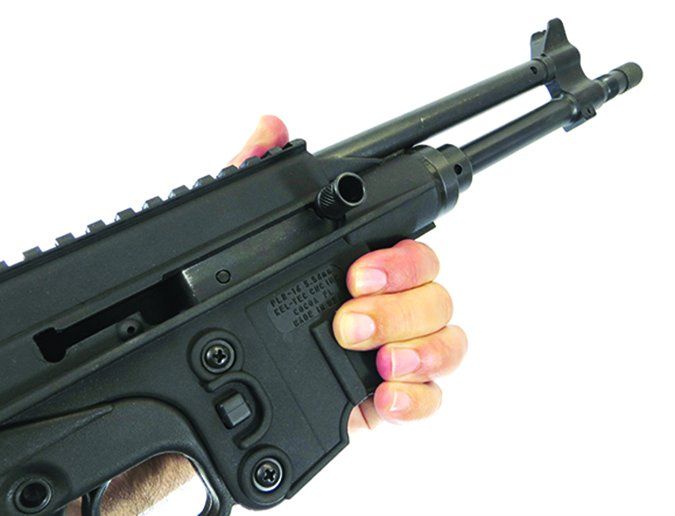
The PLR-16 is not a typical AR pistol, but is similar in concept to the Olympic Arms OA-93 pistol, which was one of the first AR-style pistols. The OA-93 pistol and the PLR-16 incorporate a long-stroke-piston operating system, eliminating the need for a buffer tube/receiver extension needed with a direct-gas-impingement system like those on the Spike’s and CMMG. Though the PLR-16 has a different operating mechanism, it is still compatible with AR-15 magazines.
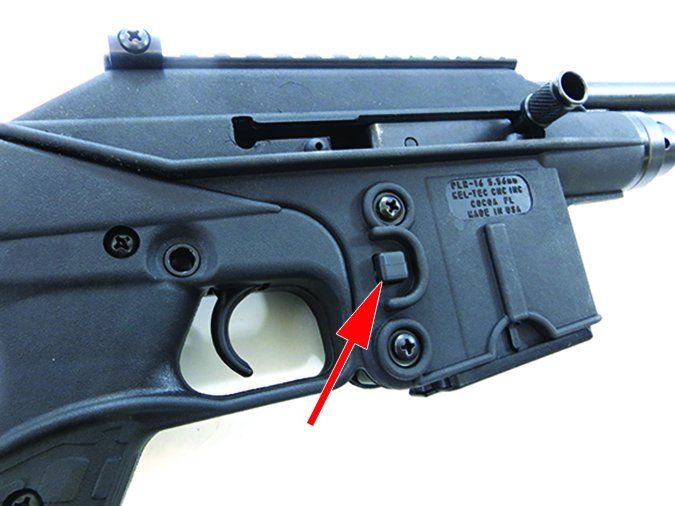
In hand, the pistol is light, the lightest of the three tested, and the most compact. With no need for a buffer tube, the PLR-16 was more maneuverable and concealable than the others, in our view. To break down the PLR-16, you need to use a bullet tip or similar tool to push out the assembly pin and then the pistol grip along with trigger group and hammer swing forward toward the muzzle. The recoil spring is then removed. Then the bolt handle is removed and then the bolt, which comes out the back end of the receiver. A bullet tip is also needed to strip down the bolt. This is a totally different process than the AR-style pistols and though not complicated, it did take longer to disassemble and reassemble.
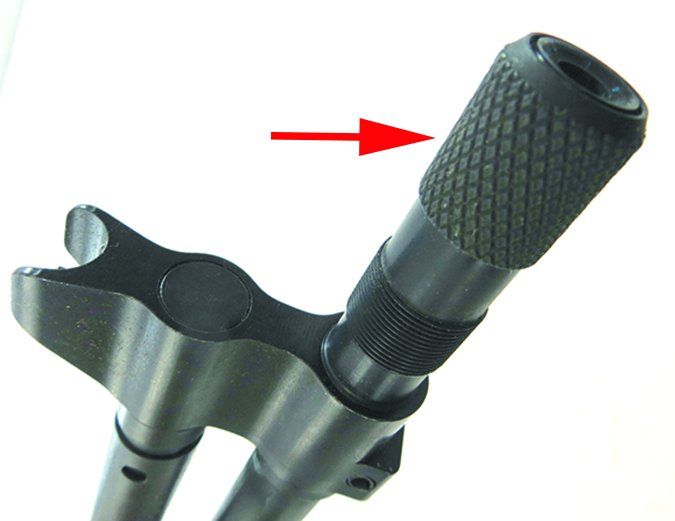
The metal mechanism of the Kel-Tec is sandwiched between a glass-reinforced Zytel polymer receiver and pistol grips. The grip had a comfortable angle and was coarsely textured for a sure grasp on the part, with or without gloves. Screws hold the polymer halves together. The 9.2-inch barrel is unsheathed, and like all 5.56 NATO/223 Rem. barrels, it heats up fast under extensive shooting. We needed to be careful and aware the barrel was bare. Kel-Tec sells an optional PLR Compact Forend ($49), and we would purchase this item to ensure we didn’t melt our fingers prints off by accidentally grasping the pistol in the barrel area, like we had become accustomed to with the Spike’s and CMMG pistols. The barrel muzzle is threaded and comes ready for a muzzle device. A sleeve protects the threads. We liked the option of being able to attach a muzzle device like a can, brake, or hider.
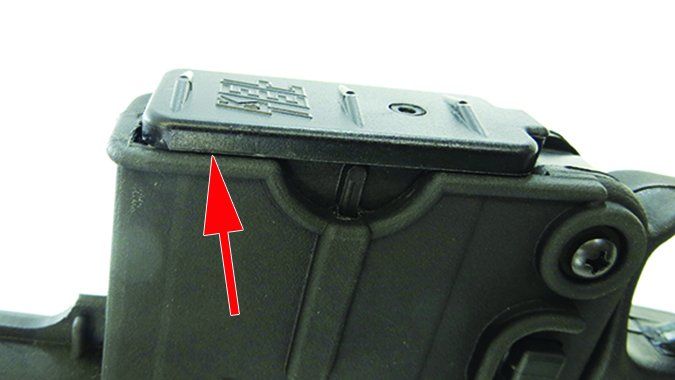
The receiver has a Picatinny-style rail molded into the top, making it optic ready. It also comes equipped with adjustable sights. You need a Phillips screwdriver to adjust windage in the rear sight. The front sight is adjustable for elevation with either a small-tipped tool, like a paper clip, or an M-16 A2-style front-sight tool. The front post is protected by wings. The sights are large and black, and we thought sufficient for self defense.
The magazine release is in a similar place to that of an AR, on the right side forward of the trigger that allows a right-handed shooter to release the magazine with the trigger finger. We would have liked the button to be slightly larger to fill the area behind a ridge in the receiver where the button is located. The PLR-16 comes with a proprietary 10-round capacity magazine that pinched our hand at times when inserting it. It also did not fall free when the magazine-release button was pressed, and it needs to be pulled out of the receiver. Finger cut-outs on both sides of the receiver allow access. In magazine-limited states, we’d use the 10-round magazine; otherwise, we think it might make a good paperweight. We had no issues with standard and aftermarket AR-15 30-round magazines pinching. With extended use, we feel the polymer receiver of the Kel-Tec will wear and magazines will eventually fall free. The crossbolt safety is located behind the trigger and was not as easy to manipulate as the standard AR-15 safety selector lever, in our view. In Fire mode, a red ring is exposed on the left side of the receiver. The operating handle is located on the right side. It locks back after last round fired and can be locked in the open position. The bolt operated fairly smoothly with no binding. Some of our team thought that if the bolt was on the left side of the receiver, operating the bolt would be easier, because the right hand grasps the grip and the left hand could operate the bolt. It felt a bit awkward going from the traditional AR-style pistols to this pistol. Not a knock, but just the reality of the way the pistol operates. The 7.5-pound trigger was the least liked out of the three pistols, but as we found out at the range, the PLR-16 had game.
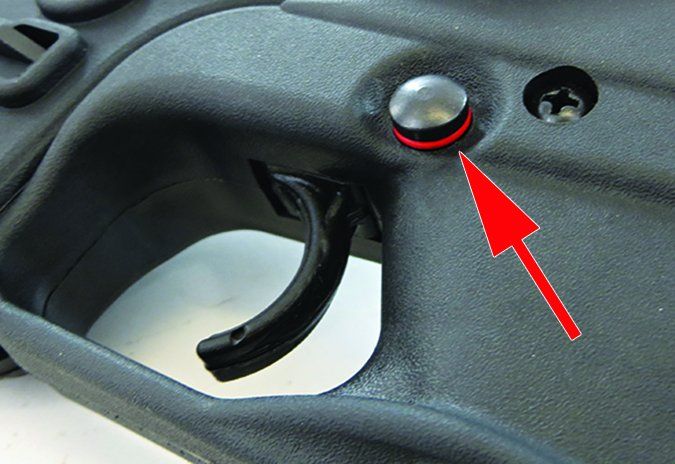
In our first magazine we had a failure to feed, so we roughly operated the bolt, which must have worked out any burrs. After that initial failure, the Kel-Tec was like a flight from NYC to London — nonstop. Our best group was with Hornady Steel Match, which put five shots into 0.4 inches using a rest at 25 yards. That was impressive, we thought, since neither the sights nor the trigger were as refined as the other pistols. We could fire the PLR-16 comfortably with one hand, though we found ourselves wanting to grip the barrel area for two-handed control. We found using the front of the magazine well or the longer 30-round magazine was the only place to grip the pistol with our support hand. We missed the single-point sling swivel the other pistols had, and would most likely purchase the optional PLR Single Point Sling ($16) if we were to buy this sidearm. Some testers liked using a single-point sling to brace the pistol for better control, especially in rapid fire. We pulled back hard on the 30-round magazine with our support hand to see if the pressure would flex the receiver and cause the pistol to malfunction. We could not choke the Kel-Tec. After testing, we did need to tighten one of the receiver screws that had loosened during firing.
Our Team Said: Out of the box, the PLR-16 had great accuracy, was light weight, and the most compact. We felt it needed a forend to make it more user friendly, and we would definitely install a sling swivel. Even with those additional options, the cost was well below the cost of the other two pistols tested. This is the pistol to style to buy if you are on a budget.
Spike’s Tactical The Jack, 5.56mm NATO, $2049
GUN TESTS GRADE: A
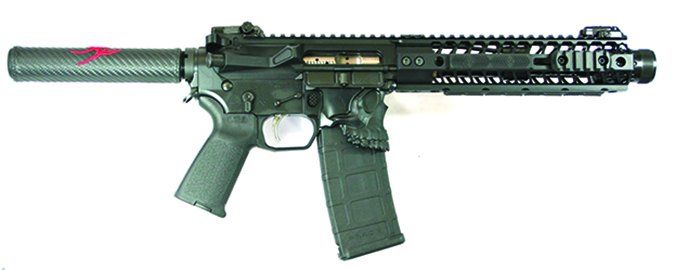
The Spike’s Tactical was exceptionally cool and performed exceptionally well; all the extras were nice and enhanced the experience. The cost was exorbitant, so assign any downgrades based on your budget.
| ACTION TYPE | Semiautomatic direct gas impingement |
| OVERALL LENGTH | 25 in. |
| OVERALL HEIGHT (w/o mag or sights) | 7.5 in. |
| WEIGHT UNLOADED | 6 lbs. |
| UPPER RECEIVER | Forged 7075-T6 aluminum |
| LOWER RECEIVER | 7075-T6 aluminum |
| BARREL | 8.1 in. |
| MUZZLE DEVICE | Barking Spider 5.56mm |
| BRACE | None |
| PISTOL GRIP | Magpul MOE |
| HANDGUARD | 10 in. SAR M-Lok, free floated |
| MAGAZINE | (1) 30-rd. Magpul PMag |
| REAR SIGHT | Magpul MBUS Pro |
| FRONT SIGHT | Magpul MBUS Pro |
| SIGHT RADIUS | 15.5 in. |
| TRIGGER | 4.5 lbs., enhanced battle trigger |
| SAFETY | Left side 2-position lever |
| CARTRIDGE CASE DEFLECTOR | Yes |
| DUST COVER | Yes |
| FORWARD ASSIST | Yes |
| WARRANTY | Full lifetime |
| TELEPHONE | (407) 928-2666 |
| WEBSITE | SpikesTactical.com |
| MADE IN | USA |
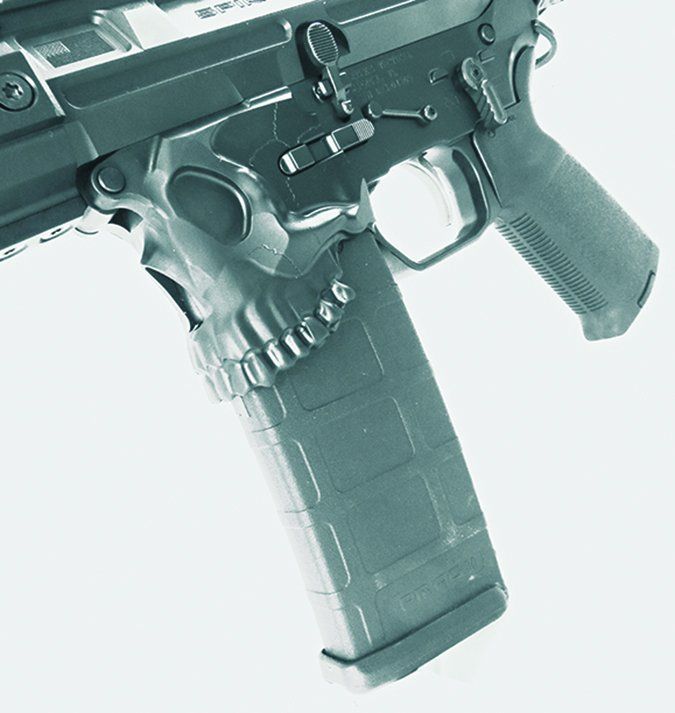
The Spike’s Tactical The Jack AR pistol was a custom build. Our first thought was the Spike’s pistol looked wicked, but did the cool factor overshadow function? This pistol uses all high-end components, with the most obvious being the The Jack lower receiver manufactured by Sharps Bros., which mills a skull face out of the front of the magazine well. This has to be one of the coolest AR pistols we have seen. The cool factor aside, the lower is 7075-T6 billet aluminum with mil-spec tolerances. The magazine is flared for smoother and faster reloads, and it features an oversized trigger guards. The flared mag well also allows you to brace the pistol. It is compatible with all mil-spec AR-15 magazines.
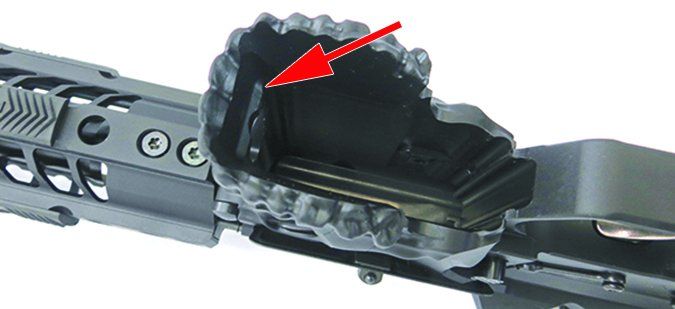
The parts in the lower, except for the Magpul MOE pistol grip, are all manufactured by Spike’s Tactical and include the forged Enhanced Battle Trigger, manufactured from 8620 Tool Steel with a Magpul MBUS Pro red hammer spring. The trigger was the best of the bunch; crisp and ultra smooth with a pull weight that averaged 4.5 pounds. KNS anti-rotation pins locked the trigger and hammer pins in place so nothing rattles loose under extreme use. The Spike’s Tactical pistol tube uses a T-2 buffer with an integrated QD socket at the rear of the tube. A sling swivel is welcome feature. Spike’s added its proprietary pistol-tube cover with the trademark spider logo — like we said, this pistol definitely had the cool factor going. The safety selector and magazine release were ambidextrous.
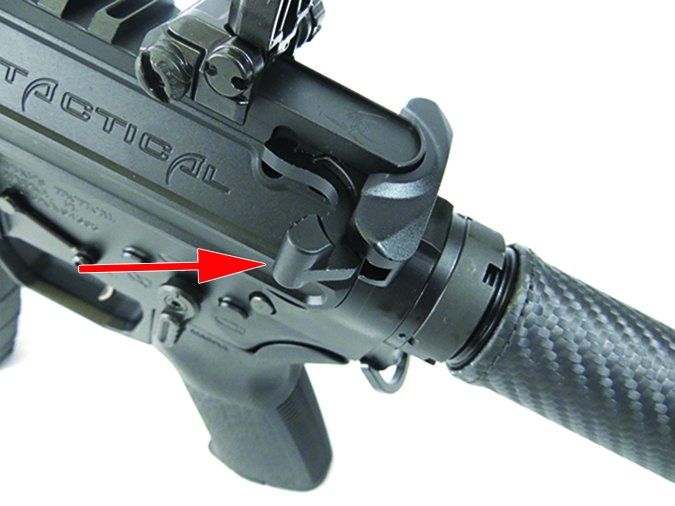
The upper assembly is Spike’s Gen 2 Billet SAR upper receiver made of 7075 aluminum with a Spike’s Tactical 8.1-inch cold-hammer-forged barrel with pistol-length gas system and a .750 gas block tied into the gas tube. The barrel has a 1:7-inch twist rate. The muzzle device is Spike’s Barking Spider 5.56mm unit, which redirects noise, blast, and concussion forward, away from the user and down range. It also increases the back pressure, which can enhance reliability. We liked this muzzle device because it performed as described. A 10-inch SAR M-Lok rail was equipped with rubber strips that made it comfortable to grip, plus a short Picatinny rail was attached for a tactical light and/or laser pointer. We felt a tactical light and/or laser would be an excellent accessory to add, and both the CMMG and Spike’s allowed that out of the box. The Kel-Tec did not. Sights were Magpul MBUS Pro folding sights, which we liked. The bolt carrier group is mil-spec and coated in nickel boron. The action on the Spike’s felt like you were running your finger tip in oil over glass. You could tell a lot of work went into building this pistol. Finally, a Bravo Company Manufacturing Mod 4 charging handle is used.
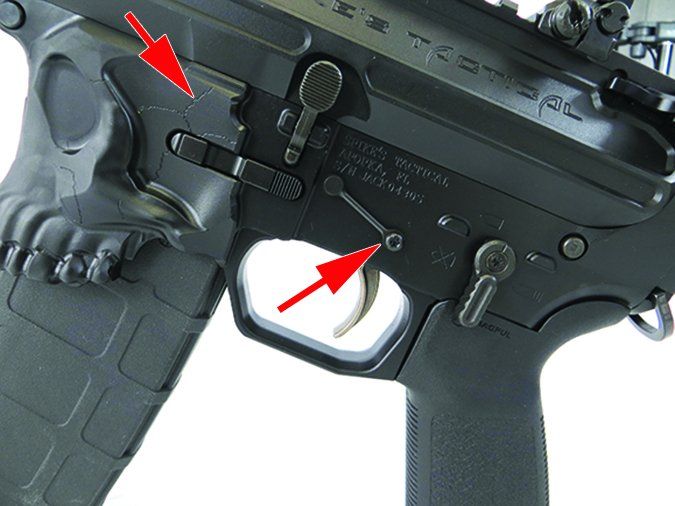
The Jack was very easy to maneuver due to the short barrel. It had excellent balance, and we found we preferred to shoot it with the Spike’s tube cover on it. Some testers placed the extension tube end just past their cheek bone to get a cheek weld on it. The cover was comfortable, without any abrasion. We used the back up iron sights, since we wanted a true, out-of-the-box experience with the pistols, though a red dot reflex sight would be a good addition. Using a rest and a target at 25 yards, it was quite easy to get groups under an inch. Most felt the Blackhawk single point sling helped steady the pistol and tighten groups when shooting offhand.
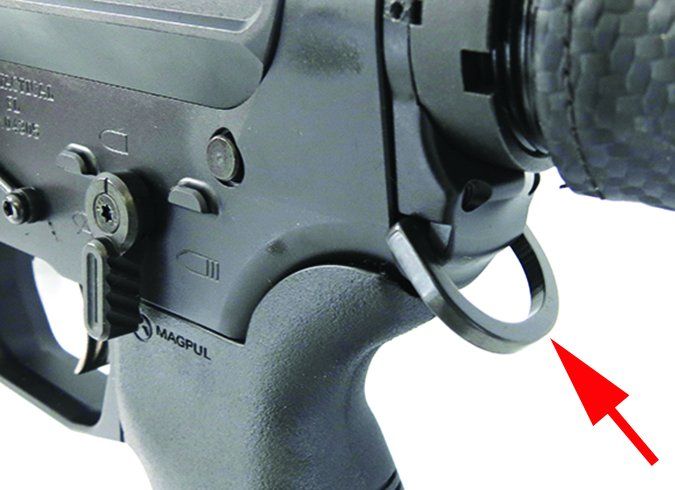
Hornady 55-grain HP Steel Match ammo gave us our best group, measuring 0.3 inches, which we attribute to the excellent trigger. With all ammo, the pistol grouped 0.9 inches and under. The oversized magazine well afforded quick and fast reloads. There were no issues at all with The Jack. We liked this pistol, and like a custom AR rifle, it is expensive.
Our Team Said: The Jack is no doubt one of the most wicked, cool-looking AR pistols available. It did not compromise performance for good looks. Packed with some performance components, the Jack was double and triple the costs of the other pistols tested. As many readers have asked us to do, we graded this an A+ based solely on its performance, and this is the AR pistol to buy if money is not an issue.
CMMG Mk4 K 5.56mm NATO, $1000
GUN TESTS GRADE: A-
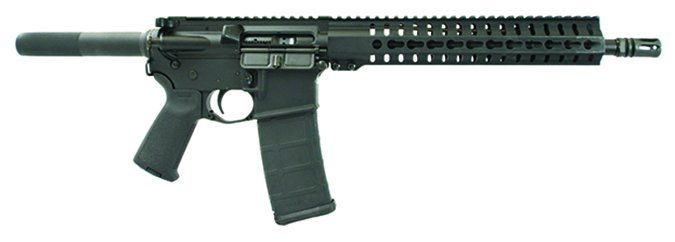
The CMMG performed well and was very customizable, but it needed sights to be used out of the box.
| ACTION TYPE | Semiautomatic direct gas impingement |
| OVERALL LENGTH | 29 in. |
| OVERALL HEIGHT (w/o mag or sights) | 7.5 in. |
| WEIGHT UNLOADED | 6 lbs. |
| UPPER RECEIVER | Forged 7075-T6 aluminum |
| LOWER RECEIVER | 7075-T6 aluminum |
| BARREL | 12.5 in. |
| MUZZLE DEVICE | A2, 1/2-28 TPI |
| BRACE | None |
| PISTOL GRIP | Magpul MOE |
| HANDGUARD | CMMG RKM11 KeyMod, free floated |
| MAGAZINE | (1) 30-rd. Magpul PMag |
| REAR SIGHT | None |
| FRONT SIGHT | None |
| SIGHT RADIUS | 15.5 in. |
| TRIGGER | 5.5 lbs. |
| SAFETY | Left side, 2-position lever |
| CARTRIDGE CASE DEFLECTOR | Yes |
| DUST COVER | Yes |
| FORWARD ASSIST | Yes |
| WARRANTY | Limited lifetime |
| TELEPHONE | (660) 248-2293 |
| WEBSITE | CMMGInc.com |
| MADE IN | USA |
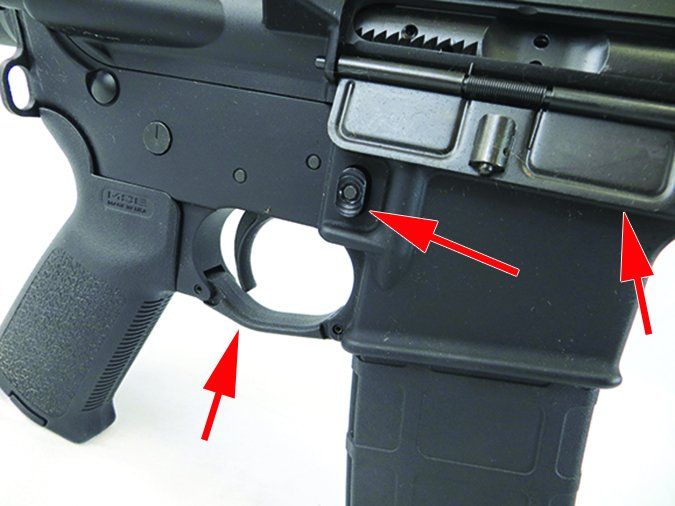
If the Spike’s and Kel-Tec are at opposite ends of the price spectrum, then the CMMG falls in the middle of the two. The CMMG uses a traditional direct-gas-impingement system and forged 7075-T6 AL M4 type upper with a 12.5-inch medium-weight barrel. An A2-style muzzle brake was attached to the barrel. A CMMG RKM11 KeyMod rail free-floats the barrel. We liked the rail because some testers could swap a light from their rifle to the pistol with no special tools or parts required.
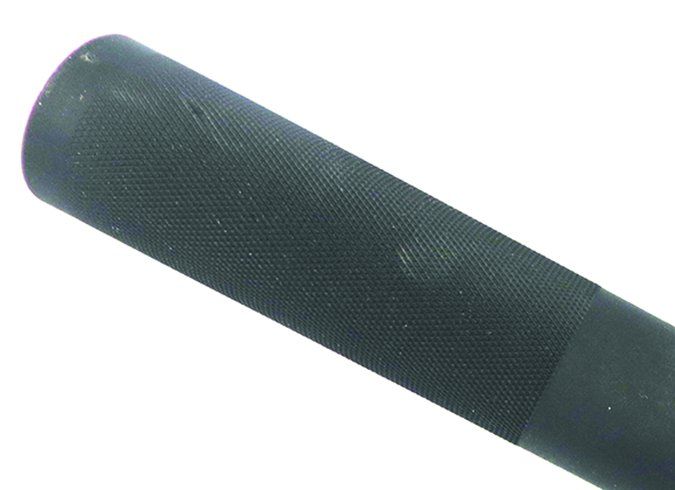
There were no sights on the Mk4 K, so we added a set of FAB Defense 3-dot tritium sights (TheMakoGroup.com; $178). These polymer sights mounted with no effort to the Mk4 K’s top rail. This pistol could be easily equipped with a red-dot optic. A mil-spec-style charging handle, dust cover, and forward assist rounded out the upper’s features. The AR-15 lower receiver type featured a mil-spec-style magazine release, bolt-carrier release, and safety selector. It also was equipped with an oversized trigger guard, which we liked, and a Magpul MOE pistol grip, which we also liked. The extension tube was textured at the end. We found it rubbed against our cheek when firing the pistol with a cheek weld. Shooters who fired that way would add a foam buffer-tube cover (Brownells.com; $7) to make shooting more comfortable. Be aware not to place the end of the tube into your cheek since you will feel the recoil. Place your cheek against the tube. The trigger was a single-stage mil-spec style that broke at 5.5 pounds, on average. It came in second close behind the Spike’s and way ahead of the Kel-Tec. The action was not as smooth as the Spike’s, nor did we expect it to be, but it was acceptable.
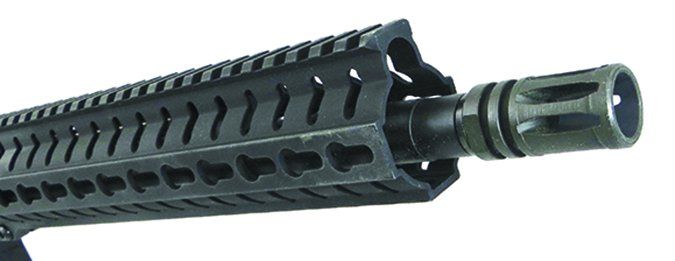
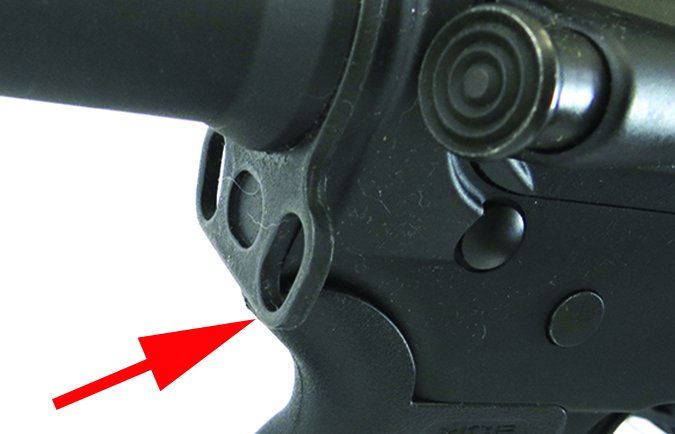
Many testers with AR-15 experience like to keep their shooting hands on the grip and perform a reload with their support hands. Operating the CMMG and Spike’s was nearly the same as operating an AR-15 rifle, except there was no stock to brace against. In hand, the CMMG was the heaviest and longest pistol tested. We actually liked the shorter barrels on the Spike’s and Kel-Tec. Using the SIG SBX pistol stabilizing brace on the CMMG, we found the brace to be a bit restricting when strapped down on our forearm, but that restriction helped stabilize the pistol when firing. The brace is constructed of a flexible, rubbery polymer. It press fits over 1- to 1.2-inch diameter receiver extensions/buffer tubes and can be attached and removed without tools. We tried to slip it over the CMMG’s tube and found the textured bit made it a bit difficult, so we used the tube provided in the SBX kit. A dry-lube-like graphite or talcum powder helps the brace slip over the tube. Once attached to the tube, a hook-and-loop strap anchors the brace to the shooter’s forearm, so the pistol becomes an extension of your arm. It was a bit difficult to get used to the pistol attached to your arm like a prosthetic. Some actually preferred to use the soft rubber brace as a cheek weld and forgo strapping it to their arms. Still, the brace helped to balance the pistol. A sling swivel was built in, so we also fired the pistol using the Blackhawk sling and found we were able to get good accuracy shooting off hand using the sling. The sling also helped tote the pistol, of course.
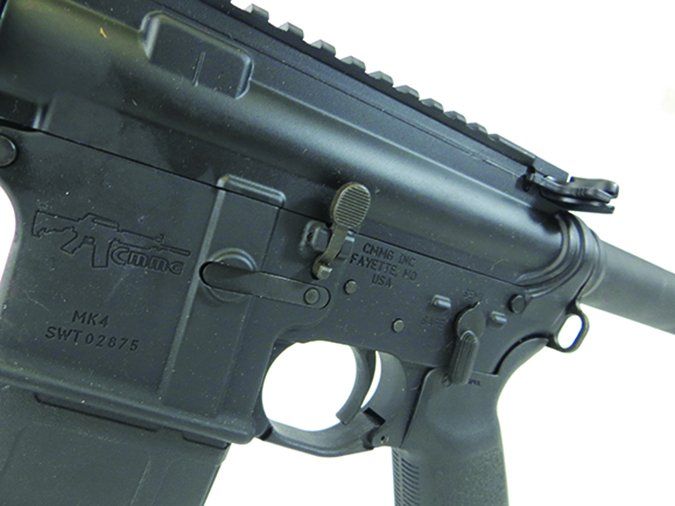
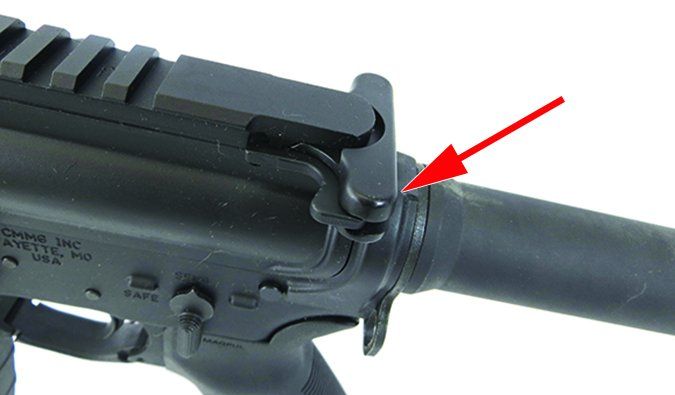
The CMMG gave the most muzzle velocity of the three pistols tested and came in second for accuracy, but an aftermarket trigger might help reduce group size further. Shot off a rest, the CMMG averaged 1-inch groups. Our best group was with Aguila 5.56mm NATO 62-gr. FMJ-BT, which shot a minuscule 0.2-inch 5-round group. That type of accuracy pleased us. Elsewhere, there were no issues with reliability. The CMMG ran on all three types of magazines. The magazine well was flared so magazines inserted easily and dropped free.
Our Team Said: The CMMG was like a blank canvas, allowing the owner to customize it as much or as little as he wanted or his budget allowed. It did need sights or an optic, so it was not good to go out of the box like the other two pistols. We feel the CMMG is a good AR pistol to buy because it allows unlimited customization, has excellent accuracy, and the price did not stop the heart. Some would have preferred a shorter barrel to make the pistol even more concealable and maneuverable.
Written and photographed by Robert Sadowski, using evaluations from Gun Tests team testers.

























